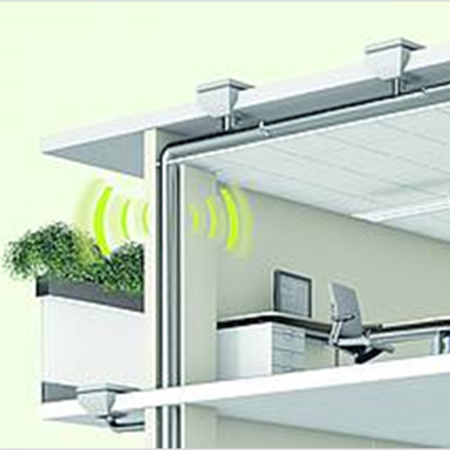Research has shown that nuisance noise is one of the greatest environmental challenges of our time. Here, Anthony Barnett, Technical Marketing Manager at Armacell, looks at how development of specialist foams and a better understanding of where noise is generated is helping address this issue.
“One of the most common sources of nuisance noise in living and working environments emanates from wastewater and rainwater pipes. The noise of falling water is transferred via un-insulated pipes to wall and ceiling elements, and from there to adjoining rooms where they create an ongoing disturbance to occupiers.
There is evidence that internal noises tend to annoy new homeowners the most. In fact, research conducted by the NHBC showed that one of the main complaints from owners of detached homes was water pipes knocking.
Sound itself moves in different ways. Airborne sound is easier to reduce whereas impact sounds are harder to solve. When it comes to the latter, small sounds can carry and even amplify as they travel through solid materials like plumbing and rainwater pipes. Add to this the flanking sounds which can travel by indirect routes, such as through walls or floors and the noise generated from plumbing and rainwater can create a real disturbance.
Noise in plumbing and rainwater pipes is caused by a variety of reasons including water hammer, loose pipes and high water pressure. Each of these generates noise as water flows through them, resulting in them quickly becoming a source of irritation to building occupants. It is common for buildings to be designed to take account of external noise, such as those from roads and railways, but internal sources can be overlooked.
Acoustic insulation foams
Noise that is transmitted through pipework can be amplified by boarding, with unsealed pipework apertures between rooms creating a pathway for sound to travel to other areas. All buildings have the potential to generate unwanted noise, although it is a particular concern in multi occupancy structures such as apartments, schools, hospitals, care homes and hotels. In the majority of these cases, specifying acoustic insulation foams, which are relatively inexpensive and easy to install, can address the issue.
The insulation industry has responded to this need, driven by a greater awareness of the effects of noise disturbance, by developing flexible technical insulation materials that are designed specifically for attenuating noise in these situations. The ArmaComfort AB Alu product consists of a 2mm thick foil faced acoustic EPDM-EVA barrier with 4kg/m2 weight and a 10mm polyurethane foam layer for decoupling. In comparison to traditional acoustic insulation products, tests show that flexible insulation foams achieve a much greater reduction in sound level, and with a thinner wall thickness.
Independent tests by CSTB (Centre Scientifique et Technique du Bâtiment) confirmed that these acoustic foams are able to reduce the airborne sound pressure levels of a Geberit roof drainage system by 16 dB (A) at 2 l/s water flow. Similar tests on a PVC pipe, where the vibrations caused by flowing water are stronger because of the lighter weight PVC, achieved a noise reduction of 12 dB (A). The human ear perceives a reduction of 10 dB (A) as halving the volume. By choosing the correct flexible acoustic foam it is possible to achieve a weighted sound reduction index (Rw) up to 28 dB when pipe and pipe elbows are insulated.
Acoustic foam materials have very good acoustic damping and acoustic isolation properties across the frequency range relevant for building acoustics – irrespective of whether it is installed on cast iron or PVC pipes. They also display very good fire behaviour, achieving the best fire class for organic products in the European SBI test. Contractors will find that the thinner thicknesses required to achieve the required decibel reduction are an advantage because it makes installation in tight spaces easier.
The consequences of not taking adequate steps to reduce noise generated from plumbing and rainwater systems usually only becomes apparent when the building is occupied, at which stage it is much more costly to remedy. It is therefore essential that noise abatement measures from external and internal sources are presented to your customer as early as possible in the tendering process.”
View ArmaComfort Product Entry






